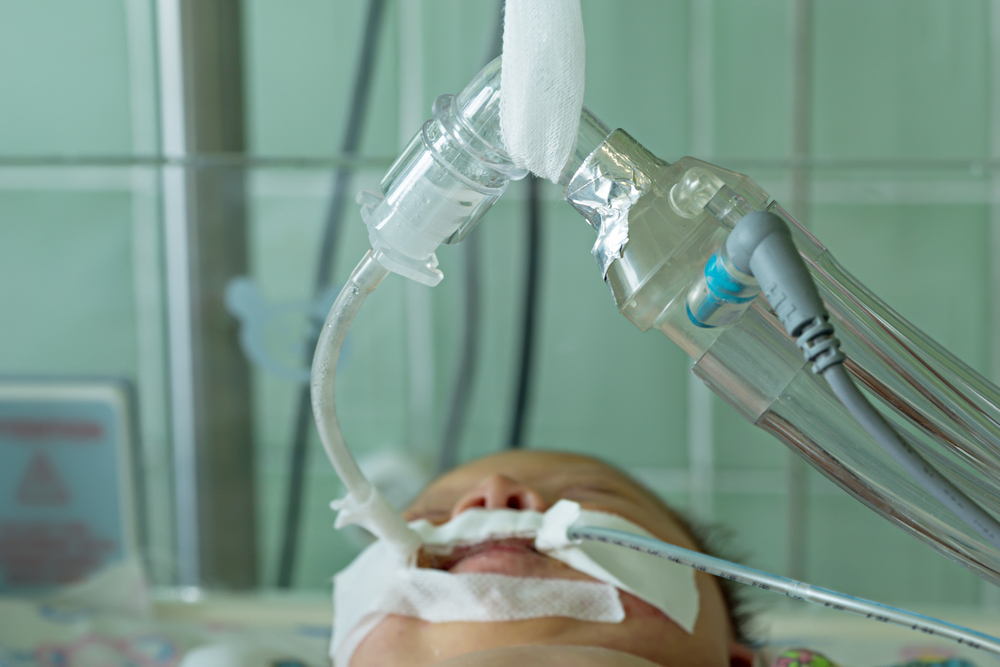The TRAMONTANE trial

The TRAMONTANE trial
REVIEW OF A RANDOMISED NONINFERIORITY STUDY
Nasal-continuous positive airway pressure (nCPAP) is the gold standard in noninvasive ventilator (NIV) support for moderate-severe bronchiolitis. High flow nasal cannula (HFNC) is gaining popularity as an alternative, for tolerance and patient comfort.
Milesi and colleagues sought to evaluate if HFNC is less effective in initial management of bronchiolitis in infants [1]. The multicentre randomised noninferiority TRAMONTANE trial compared HFNC 2L/kg/min with nCPAP 7cm H2O for initial 24 hours treatment in 142 infants, <6 months old, with clinical diagnosis of bronchiolitis, modified Wood’s clinical asthma score (mWCAS) >3, no underlying cardiac/neuromuscular disorder, and no pneumothorax.
The primary endpoint: percentage failure within 24 hours of randomisation. To conclude HFNC as not inferior, failure rate of HFNC had to lie within 15% of that of nCPAP. Failure criteria: 1-point increase in mWCAS or discomfort EDIN score, RR rise >10/min with RR >60/min, >2 severe apnoea episodes/hour.
The authors could not conclude HFNC to be inferior to nCPAP, with 31% failure on nCPAP and 50.7% on HFNC, a difference of -19% (95% CI -35 to -3%). Superiority analysis showed nCPAP as superior (p=0.001) with RR 1.6. Leading cause of failure: discomfort for nCPAP and worsening respiratory distress for HFNC. 60% failures were in the first 6 hours.
This is the first RCT comparing two modalities of NIV for initial management of bronchiolitis. Strengths of the study include multicentre randomised design, objective failure criteria, combined intention-to-treat and per-protocol analysis.
Overly sensitive failure criteria and lack of blinding could contribute to the high failure rate (40% vs. anticipated 15%). Other confounding variables eg. atelectasis, other treatment given i.e. nebulisations-physiotherapy, gastric decompression have not been compared between the two groups. With limited evidence that 2L/kg/min equates to PEEP7 [2] it would have been useful to see if allowing an increase in peep/flow rather than swapping therapies in case of failure changed the result. Only one failure criteria measures discomfort while three measure respiratory distress. Additional ‘comfort’ related criteria i.e. ease-effectiveness of physiotherapy-nebulisation, social interaction and feed intolerance are not accounted for.
The study is not powered to conclude nCPAP decreases need for intubation or PICU length of stay. There were no air leaks and no deaths. Higher pressure or higher flows may produce different results.
Take Home Message:
1) Preemptive HFNC 2L/kg/min cannot be concluded as being as good as nCPAP 7cm H2O Peep for initial Bronchiolitis management.
2) Higher FiO2 requirement is a predictor of failure for HFNC.
Article review submitted by Dr Toranj Raimalwalla and Dr Amy Chan-Dominy (EJRC member) on behalf of the ESICM Journal Review Club.
References:
1. Christophe Milési et al (2017) High flow nasal cannula (HFNC) versus nasal continuous positive airway pressure (nCPAP) for the initial respiratory management of acute viral bronchiolitis in young infants: a multicenter randomized controlled trial (TRAMONTANE study). Intensive Care Med (2017) 43:209–216.
2. Milési C, Baleine J, Matecki S et al (2013) Is treatment with a high flow nasal cannula effective in acute viral bronchiolitis? A physiologic study. Intensive Care Med 39:1088–1094.